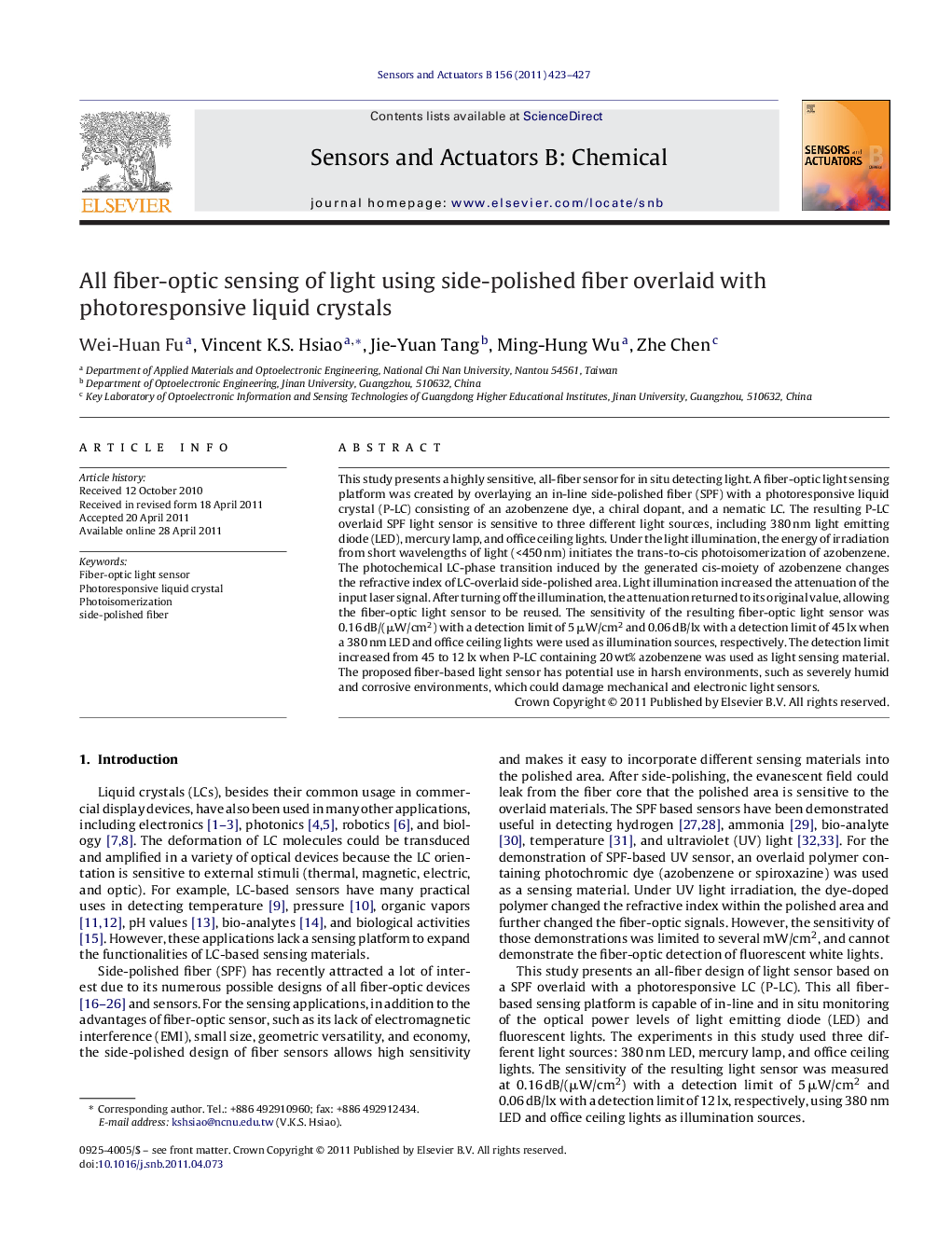| Article ID | Journal | Published Year | Pages | File Type |
|---|---|---|---|---|
| 740854 | Sensors and Actuators B: Chemical | 2011 | 5 Pages |
This study presents a highly sensitive, all-fiber sensor for in situ detecting light. A fiber-optic light sensing platform was created by overlaying an in-line side-polished fiber (SPF) with a photoresponsive liquid crystal (P-LC) consisting of an azobenzene dye, a chiral dopant, and a nematic LC. The resulting P-LC overlaid SPF light sensor is sensitive to three different light sources, including 380 nm light emitting diode (LED), mercury lamp, and office ceiling lights. Under the light illumination, the energy of irradiation from short wavelengths of light (<450 nm) initiates the trans-to-cis photoisomerization of azobenzene. The photochemical LC-phase transition induced by the generated cis-moiety of azobenzene changes the refractive index of LC-overlaid side-polished area. Light illumination increased the attenuation of the input laser signal. After turning off the illumination, the attenuation returned to its original value, allowing the fiber-optic light sensor to be reused. The sensitivity of the resulting fiber-optic light sensor was 0.16 dB/(μW/cm2) with a detection limit of 5 μW/cm2 and 0.06 dB/lx with a detection limit of 45 lx when a 380 nm LED and office ceiling lights were used as illumination sources, respectively. The detection limit increased from 45 to 12 lx when P-LC containing 20 wt% azobenzene was used as light sensing material. The proposed fiber-based light sensor has potential use in harsh environments, such as severely humid and corrosive environments, which could damage mechanical and electronic light sensors.
